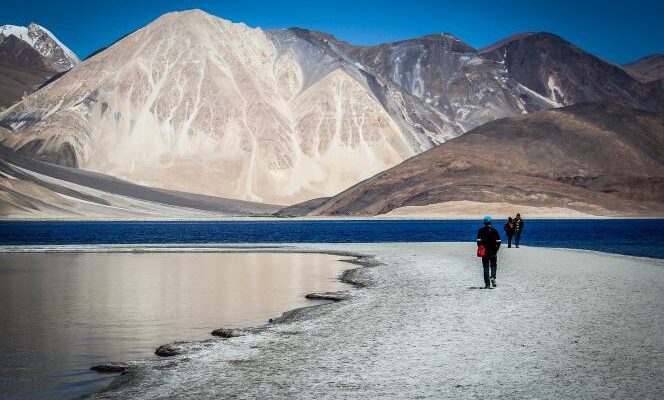NEW DELHI LETTER
The man inspired a hit Bollywood comedy, 3 Idiots, released in 2009. He lives in Ladakh, this region located on the edge of the Himalayas, which was until recently one of the last territories spared from India. This frozen desert with its splendid lunar landscapes, punctuated by oases in the bottom of the valley and Buddhist monasteries perched in the mountains, is cut off from the world for much of the year due to extreme temperatures, snow and ice. that make the roads impassable. It is still home to a rich biodiversity and many nomads who live according to their traditions with herds of yaks and sheep. But for how long ?
Sonam Wangchuk, a 56-year-old engineer, decided to sound the alarm by starting on January 26, India’s National Day, a five-day fast at the Khardung La pass, located at 5,359 meters , where the mercury can drop to -40°C. This summit provides access to the spectacular Nubra Valley and Lake Pangong, one of the region’s tourist “spots”.
“Glaciers surrounded by highways and human activity are melting at a faster rate. » Sonam Wangchuk
In thirteen-minute video broadcast on social networks, Sonam Wangchuk appeals to Prime Minister Narendra Modi to ask him to protect this ecologically fragile territory, threatened by global warming and economic development. Many Himalayan glaciers are set to disappear by the end of the century if the world stays on the same trajectory of greenhouse gas emissions, when they are essential for ecosystems and food water supply for populations – villages are already suffering from shortages.
The engineer became personally involved in protecting the environment and founded the school HIAL, Himalayan Institute of Alternatives Ladakh, to work on solutions. In the winter, he makes artificial glaciers, ice stupas, which constitute water reserves during the dry season.
“If action is not taken, industries, tourism and commerce will continue to thrive in Ladakh and will eventually finish it off. Recent studies by the University of Kashmir and other research organizations have concluded that only two-thirds of Ladakh’s glaciers will remain if not properly cared for. Glaciers surrounded by highways and human activity are melting at a comparatively faster rate”he explains.
You have 54.22% of this article left to read. The following is for subscribers only.
